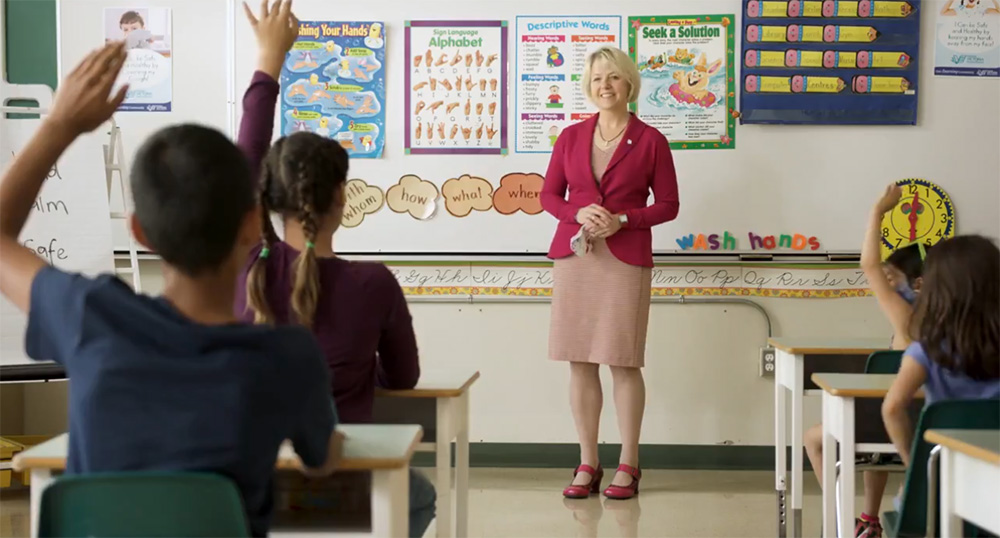Schools are community hubs and, especially during a pandemic, the community must stay together. Speaking as both a professor in educational technology and a full-time single parent, B.C.’s back-to-school plan is not ready yet.
Parents face an immediate decision between brick-and-mortar school, distributed learning where they work with teachers but give up their connection to a local school, or registered homeschooling for their child.
Education Minister Rob Fleming has “extended the authority to all school boards to flexibly offer remote learning programs to students within their districts and local brick-and-mortar schools.” But all 60 school districts are interpreting this differently, and parents do not have the information needed to make the critical decision on returning their children to school.
Distributed learning options link students with a school and teachers as they study largely at home. Not all school districts have their own distributed learning school, so students may be connected with a school in a distant community. Even if it is offered within their district, students may be pushed out of their local school and be disconnected from their network of friends. Class sizes are larger, with a teacher handling up to 200 students compared with 30 in a local school. Students who opt for distributed learning this year are also not guaranteed a chance to return to their neighbourhood school.
Some districts say they present remote options, but the devil is in the details. These remote options may still remove learners from their local schools.
Teachers and parents want the same things: to prioritize prevention above contact tracing, smaller class sizes, and remote options that keep learners enrolled in their local school.
Under the current plan, many families will withdraw to distributed learning or homeschooling because of their discomfort with the lack of individual health precautions or because they cannot be assured their child with disabilities will receive adequate support. This puts a greater burden on vulnerable learners and parents — disproportionately women — and threatens the public education system as a whole because it means lower funding and reduced diversity. Teacher jobs will be cut as homeschooling doesn’t involve one, and one teacher at a distributed learning school may replace several brick-and-mortar school teachers.
It seems the back-to-school plan originated with the Ministry of Health’s desire to rely on contact tracing to identify cases and reduce the spread of COVID-19. What may be a good population-level health system for containment will not result in a robust education system. It does not support inclusion and equity, which are pillars of a strong education system, nor does it protect individuals’ rights to a safe education while increasing the individual risk of transmission to vulnerable family members.
The government should be working to keep learners enrolled in local public schools by addressing these concerns. That would maintain connections to the school, allow daily health checks, and preserve K-12 sector jobs.
Embedding remote schooling options within catchment schools is the only model that can provide greater equity across the province, as families can clearly see the inequalities between district plans.
Here are five steps for fixing the current situation.
• Conduct a proper needs assessment of learners and teachers. Plans are being developed without proper consultation. The recent parent surveys were inadequate, so must be repeated with some standardized questions across the province. By surveying teachers, we may find overlap in remote teaching interests with learners.
• Let students choose their learning option. Provide the opportunity for remote learning, in-school classes, or a blended option as requested by all families, so they can make their own health risk assessments without being marginalized. Requiring a doctor’s note for remote accommodation for autoimmune learners is pedantic, invasive, and unnecessary, plus a tax on the health system. If families aren’t provided with options, many will simply enrol and then not send their children while demanding learning support.
• Remote options must be embedded within community schools. Districts must retain learners within their community schools with their friends and trusted staff, and support remote learning through creative designs — at the classroom level, school level, and by combining the efforts of schools. For quality online learning, class size should be equal to in-person options.
• Address assessment. Research has shown grades have low reliability. Schools can already give parents the option to request anecdotal report cards (except in Grades 11-12 which require grades for post-secondary admissions). All B.C. schools need to make anecdotal report cards the default and provide parents graded report cards upon request. There should be resources aimed at providing equitable support in Grades 11 and 12, as grades are important for students’ futures and this year will be disruptive.
• Rethink our approach to the curriculum. In the spring, some teachers felt compelled to “cover the curriculum” before the school year ended. This created unnecessary pressure on their learners and themselves. The new B.C. curriculum was built to be flexible and provide more co-created inquiry-based learning and learner agency. It’s time to take advantage of that and prioritize social and emotional well-being.
These steps take time. The start date needs to be pushed back to Oct. 1. ![]()
Read more: Education, Coronavirus
















Tyee Commenting Guidelines
Comments that violate guidelines risk being deleted, and violations may result in a temporary or permanent user ban. Maintain the spirit of good conversation to stay in the discussion.
*Please note The Tyee is not a forum for spreading misinformation about COVID-19, denying its existence or minimizing its risk to public health.
Do:
Do not: